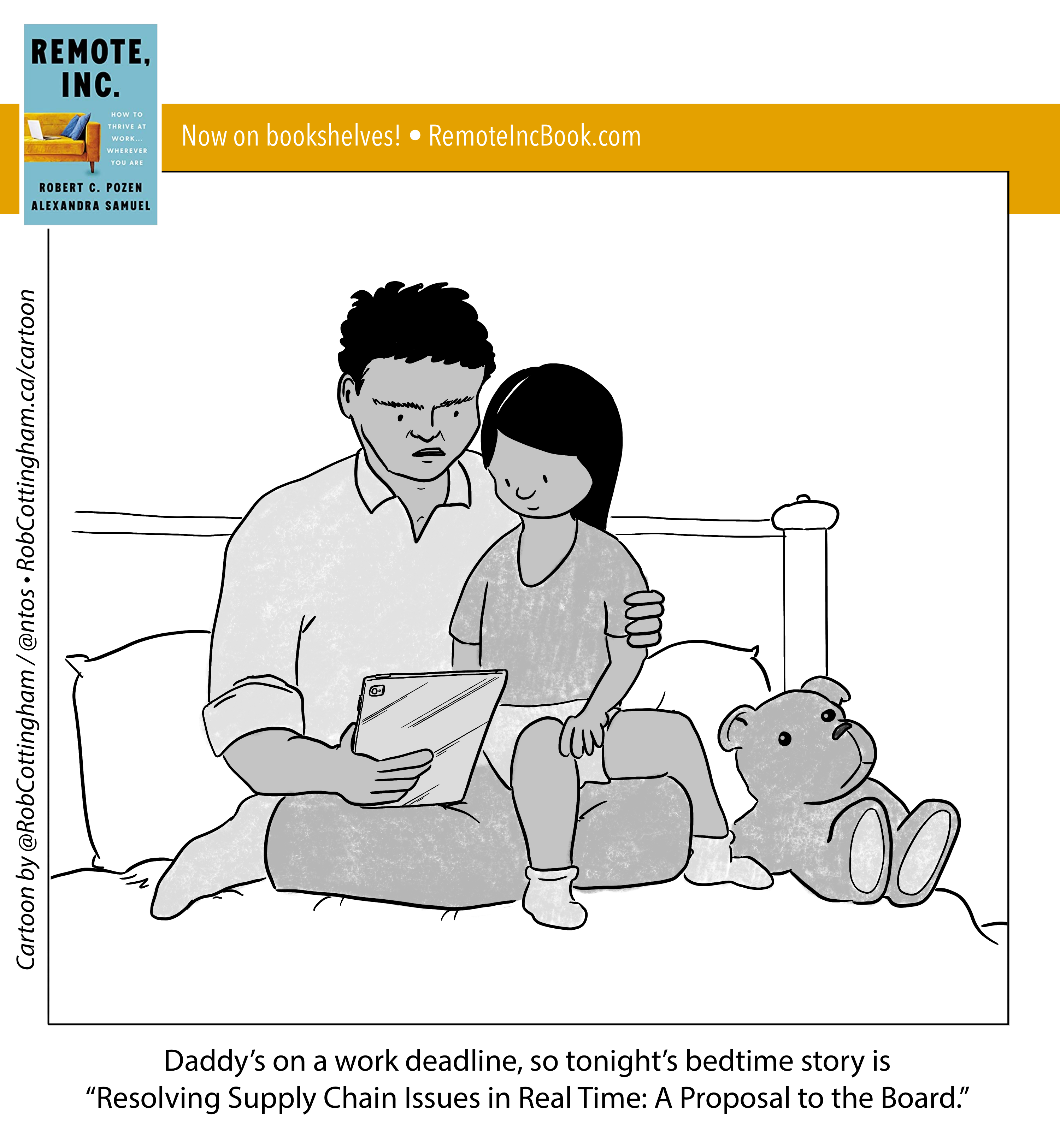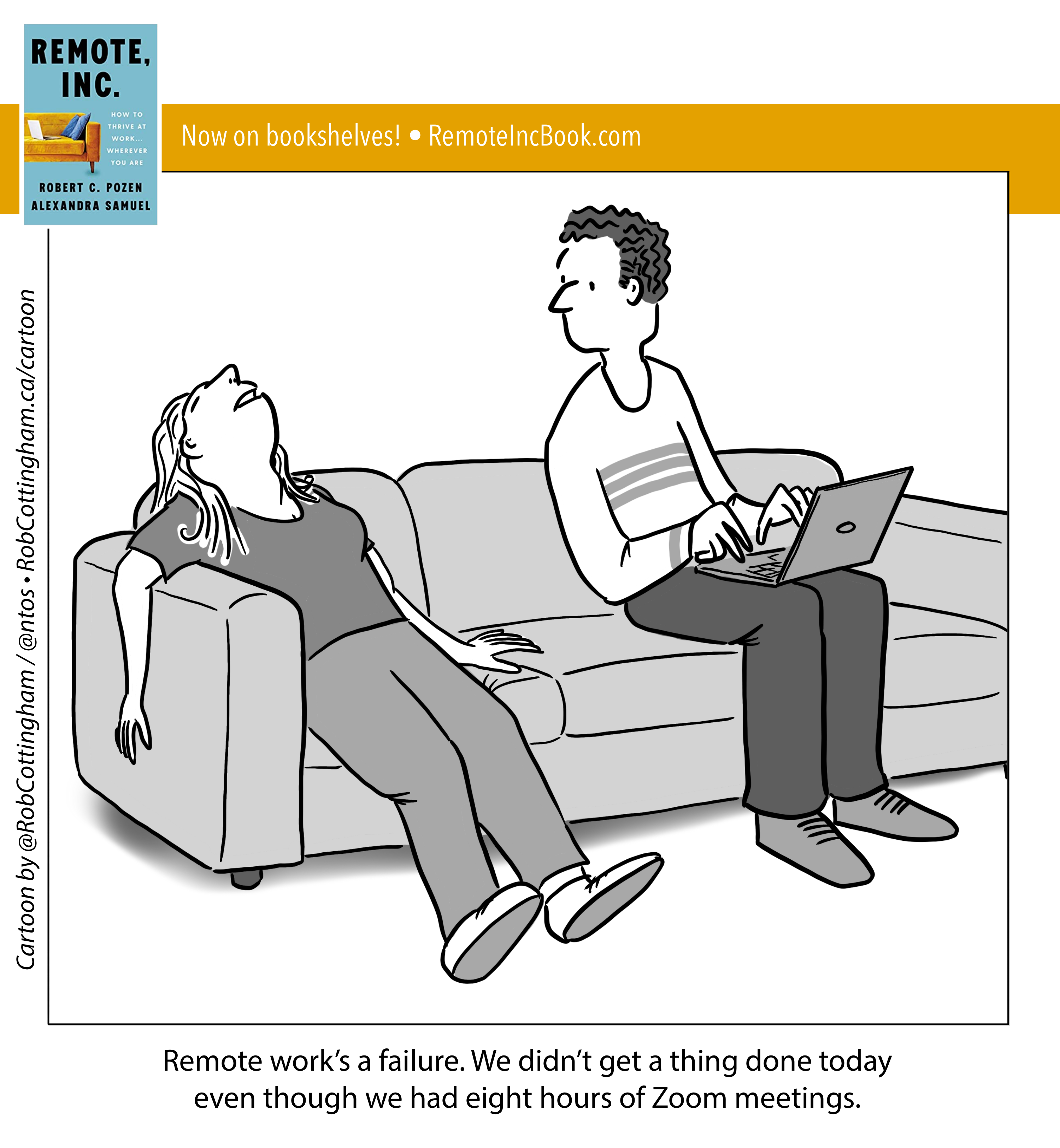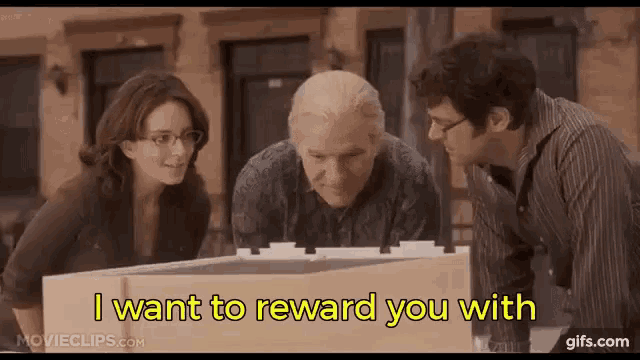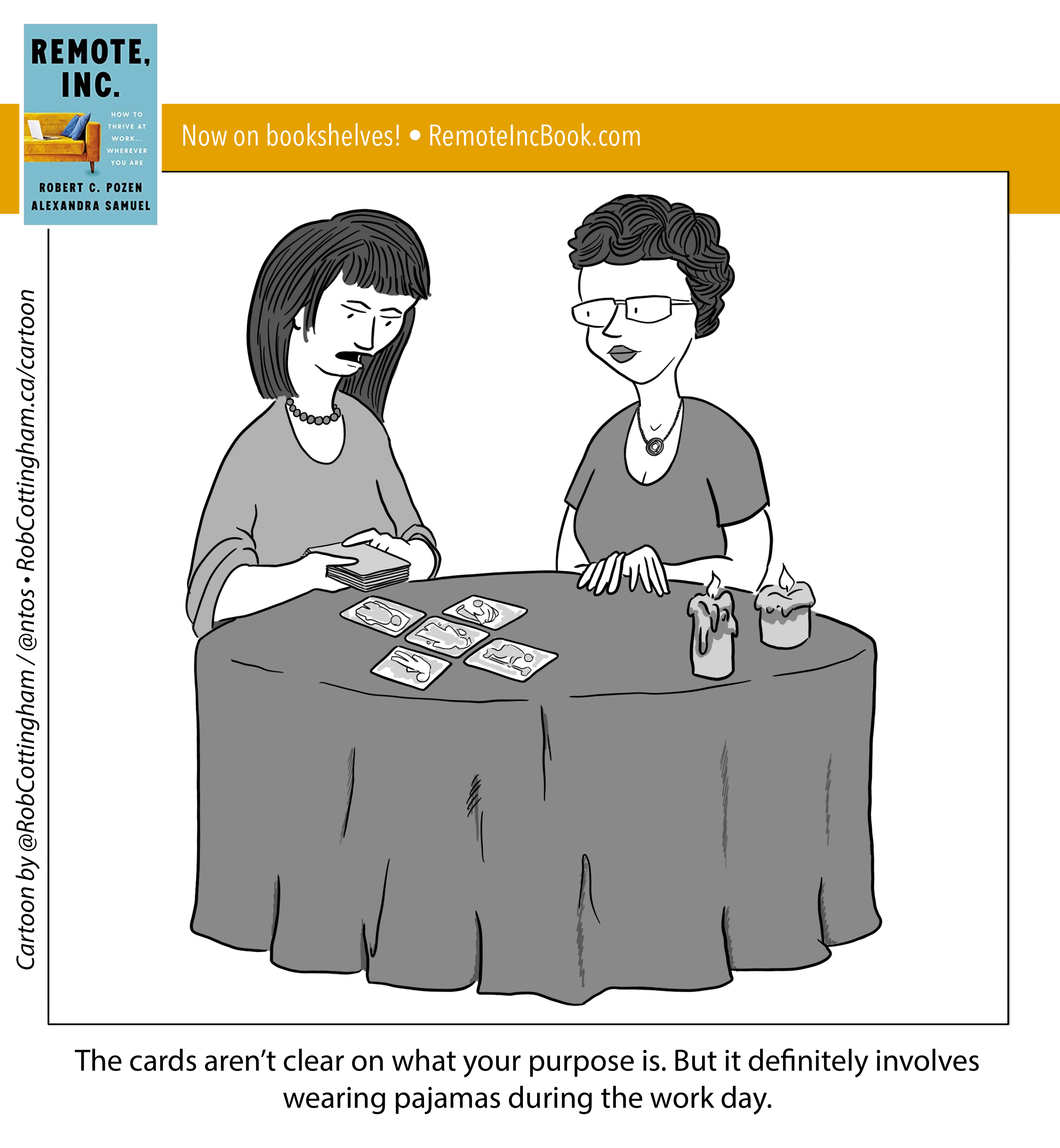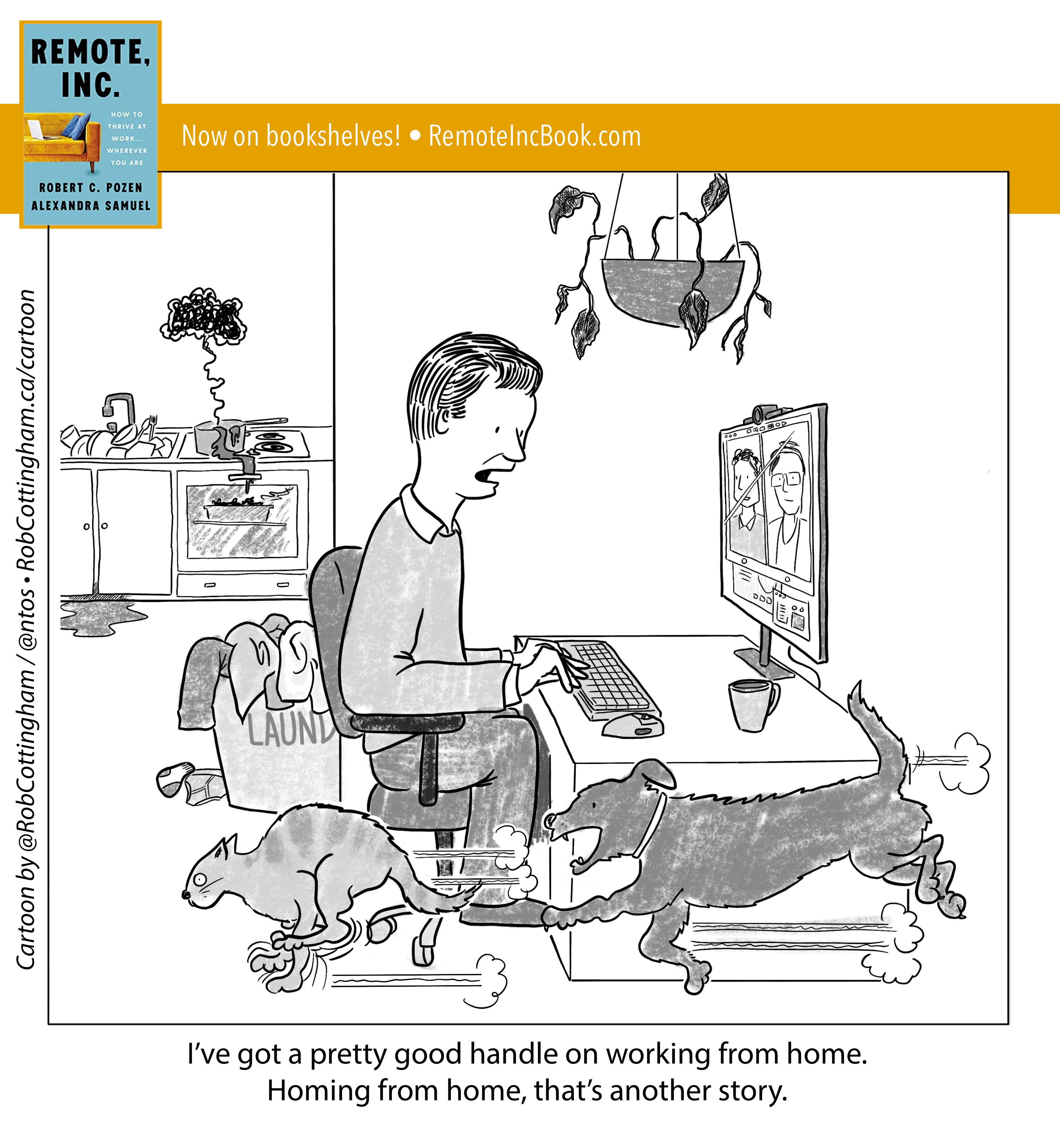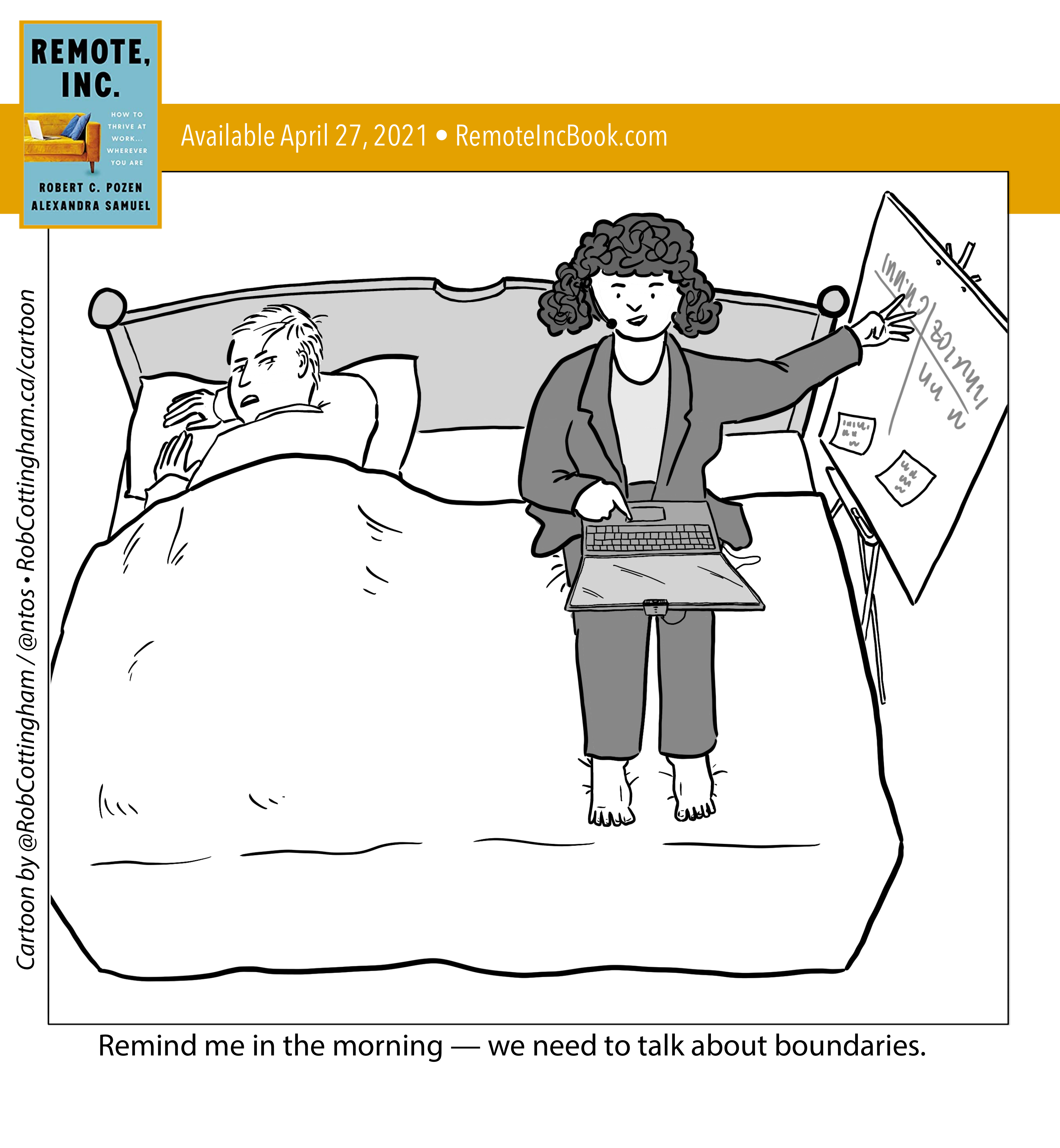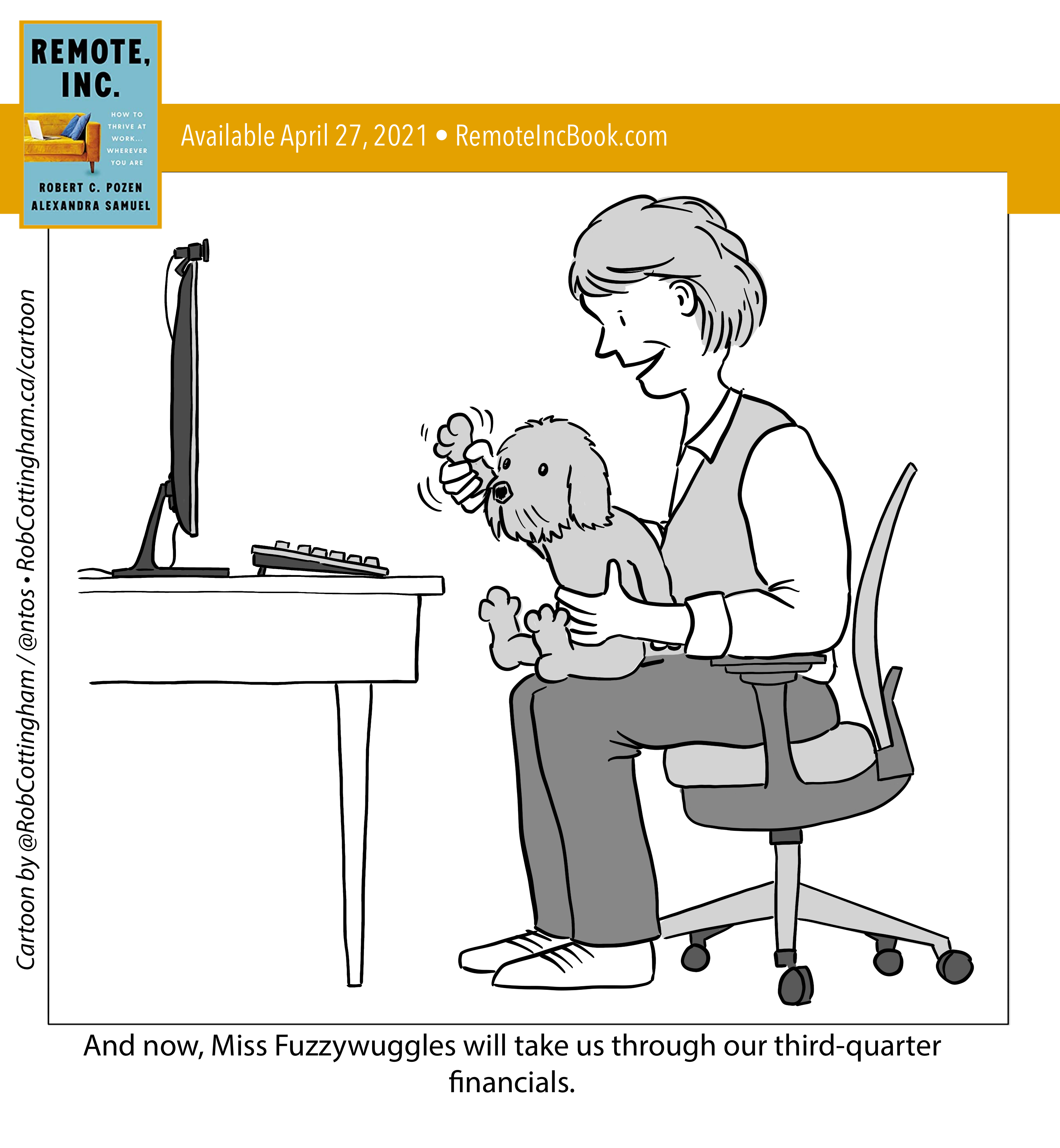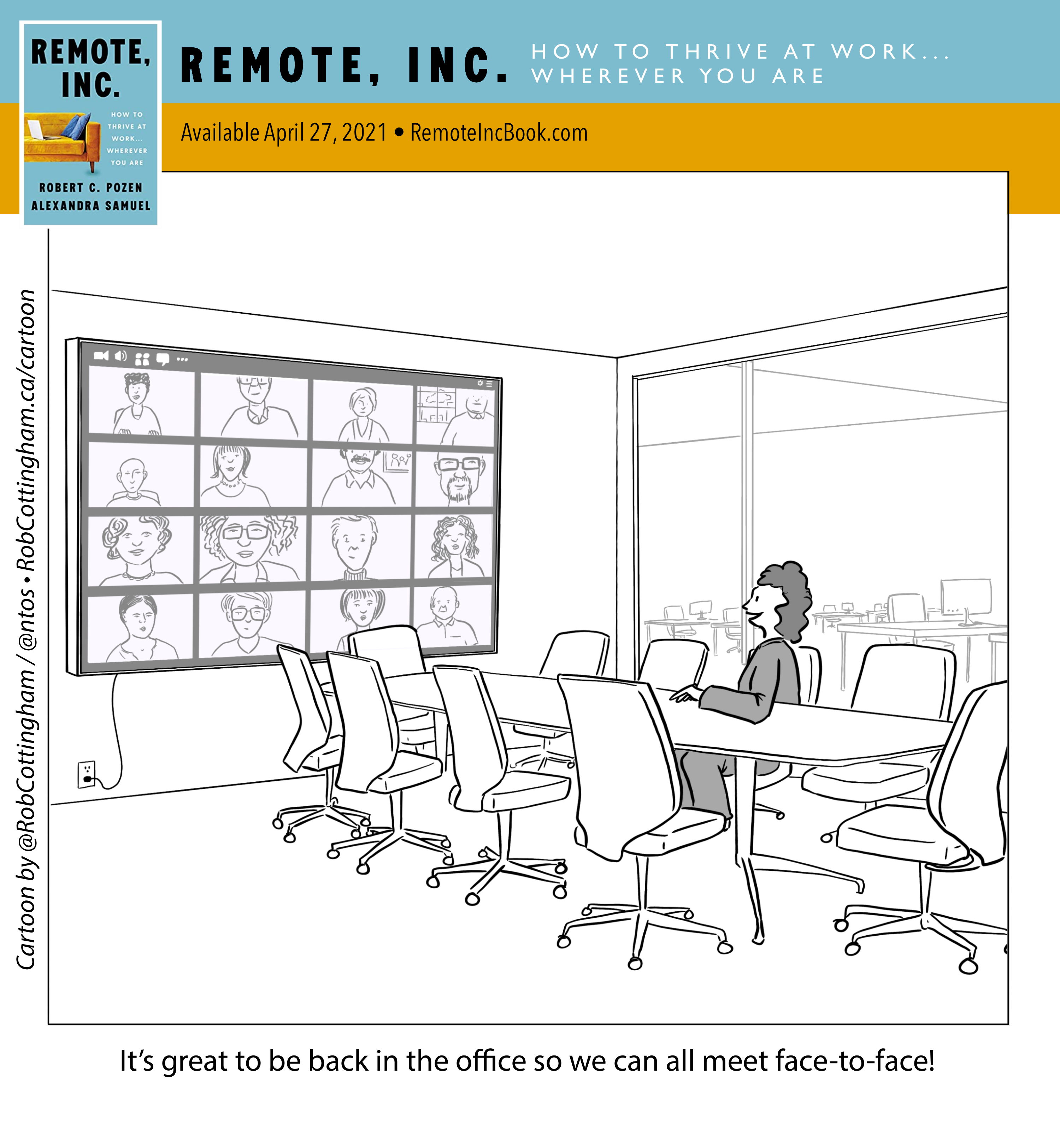You may raise your eyebrows at the parenting in this cartoon, but think about the bedtime classics. What is Jack and the Beanstalk if not a parable about the challenges of scaling up? Rapunzel is about technological innovation to overcome barriers to entry. Goodnight, Moon teaches us the merits of conducting regular inventories.
Working from home in these pandemic days has meant a lot of tradeoffs as our work lives intrude on our personal lives, and vice versa. We’re taking crucial phone calls in closets (clothing, linen or, ahem, water) because they’re the only quiet place in the house; we’re fighting the temptation to bolt down dinner and get back to the laptop because of a looming deadline. Remote work has meant making often-hasty accommodations — not all of which stand up over time.
But with the prospect of remote work becoming a permanent part of the mix for a lot of people, maybe it’s time to take another look at those makeshift arrangements and build the kind of lives — personal and professional — that we really want. My wife Alexandra Samuel, co-author of Remote, Inc.: How To Thrive At Work… Wherever You Are, has offered a valuable perspective on how to keep remote work from overtaking our home lives. That includes both mental shifts in our thinking and concrete practices that take you beyond work-life balance to work-life integration.
And speaking of Remote, Inc.: For the past several weeks, I’ve had the delight of creating cartoons to celebrate and promote the book. Alex and co-author Robert C. Pozen have created the definitive roadmap to the new hybrid workplace, and I urge you to check it out. This is the final cartoon in the series, and it’s probably my favourite of the bunch.

